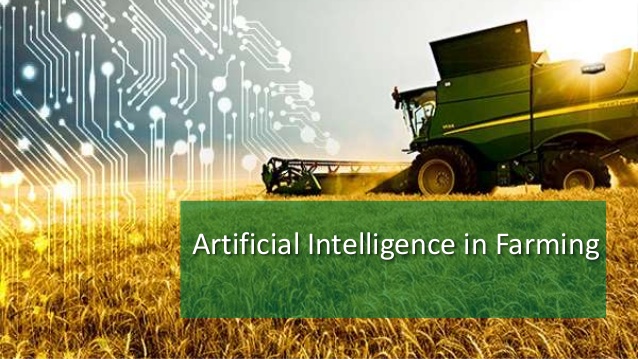(APP):Agriculture is backbone of country’s economy. It accounts for nearly 19% of the Gross Domestic Product (GDP). With agro-based products, the sector fetches 80% of the country’s total export earnings. More than 42 percent of the labour force is directly or indirectly engaged with the agriculture sector.
Agriculture sector offers raw materials to major industries including textile, leather, rice processing, edible oil, sugar and some others. However, this highly important sector is faced with many challenges including poor quality seeds, substandard fertilizers, fake pesticides, attack of different diseases on crops, low fertility of soil, weeds, excessive use of pesticides as well as some other toxic chemicals and above all, conventional ways of agricultural practices. Many countries including the United States of America, China, and European nations achieved commendable successes in the agriculture sector by utilizing modern technologies especially ” Artificial Intelligence” (AI) in the Agriculture sector.
Artificial Intelligence is the ability of a computer to act like a human being. It has several applications, including software simulations and robotics, which are helpful in addressing problems and easing human lives in almost all sectors of human interest.
Artificial intelligence in the agriculture sector is playing an important role in resolving problems, including management of crops, soil, water, climate changes and even marketing of agricultural products in different developed countries of the world.
However, our country is lagging behind in this field, said Vice Chancellor Muhammad Nawaz Sharif University of Agriculture Dr Asif Ali, while talking to APP. For example, he elaborated, “a drone camera flies over a field and takes images of fields within a few minutes.” The images, taken through a drone camera, could easily identify the affected areas of the crop. With the help of AI, a better and timely decision for the treatment of the damaged portions of the field could be taken.
Artificial Intelligence can help the agriculture sector in many ways including forecasts about weather changing patterns, temperature , moisture, pace of wind, soil condition, harvesting technology, detection of disease in crops/plants, poor plant nutrition and it also presents a precise solution to all problems of crops, says Asif. Modern spray machines with some particular sensors for detection and elimination of harmful weeds in the agriculture fields, could be introduced by the dint of artificial technology in the country. In this way, the farmers will apply pesticides at targeted areas. It would not only be cost effective but would also help in keeping the environment safe and secure from excessive use of chemicals , stated VC. Associate Professor, Dr Jehanzeb Masood Cheema, (Department of Agricultural Engineering ARID University, Rawalpindi) told APP, “We can improve agricultural productivity by applying artificial intelligence”. It could help in proper monitoring of crops, analysis of soil, requirement of soil, targeted use of chemicals, improve harvesting techniques with the help of sensors, yield mapping, traceability for enhancing marketing of agricultural goods he said.
Artificial Intelligence should be promoted in the country , he said adding, Collaborated efforts by experts of Information Technology (IT) and Agriculture Experts were needed to promote the modern trend of Artificial Intelligence. Associate Professor Dr Amjid Iqbal (Department of Computer Science, University of Central Punjab) also stressed the need for joint working of agriculturists and IT experts for ensuring AI technology .
He observed, in the recent past, some research had been conducted in sample fields. Mapping of affected areas of crops was done with the help of drone cameras and then the images data was analyzed. After consultation with agriculture experts, they applied some particular pesticides and achieved over 80 percent success.
The success rate could be improved further through use of artificial technology, he maintained. Dr Amjid remarked that artificial intelligence in agriculture would lead to a bumper and quality yield. It can also help address issues related to food security.
Similarly, it can facilitate farmers by reducing input cost and enhancing crops production. He suggested that the government should focus on Artificial Intelligence especially in the Agriculture sector as there was huge potential in the agriculture sector. Agriculture can revive the economy. There should be maximum coordination between the concerned government organizations in order to promote artificial intelligence to enhance quality agricultural productions.
Dr Irfan Jafar, Head of Department of Software Engineering Superior University, also supported artificial intelligence in all sectors.
He termed artificial intelligence as the basic reason for the development of different developed countries.
He urged upon the government to offer a conducive environment and special packages for AI use in the agriculture sector.













